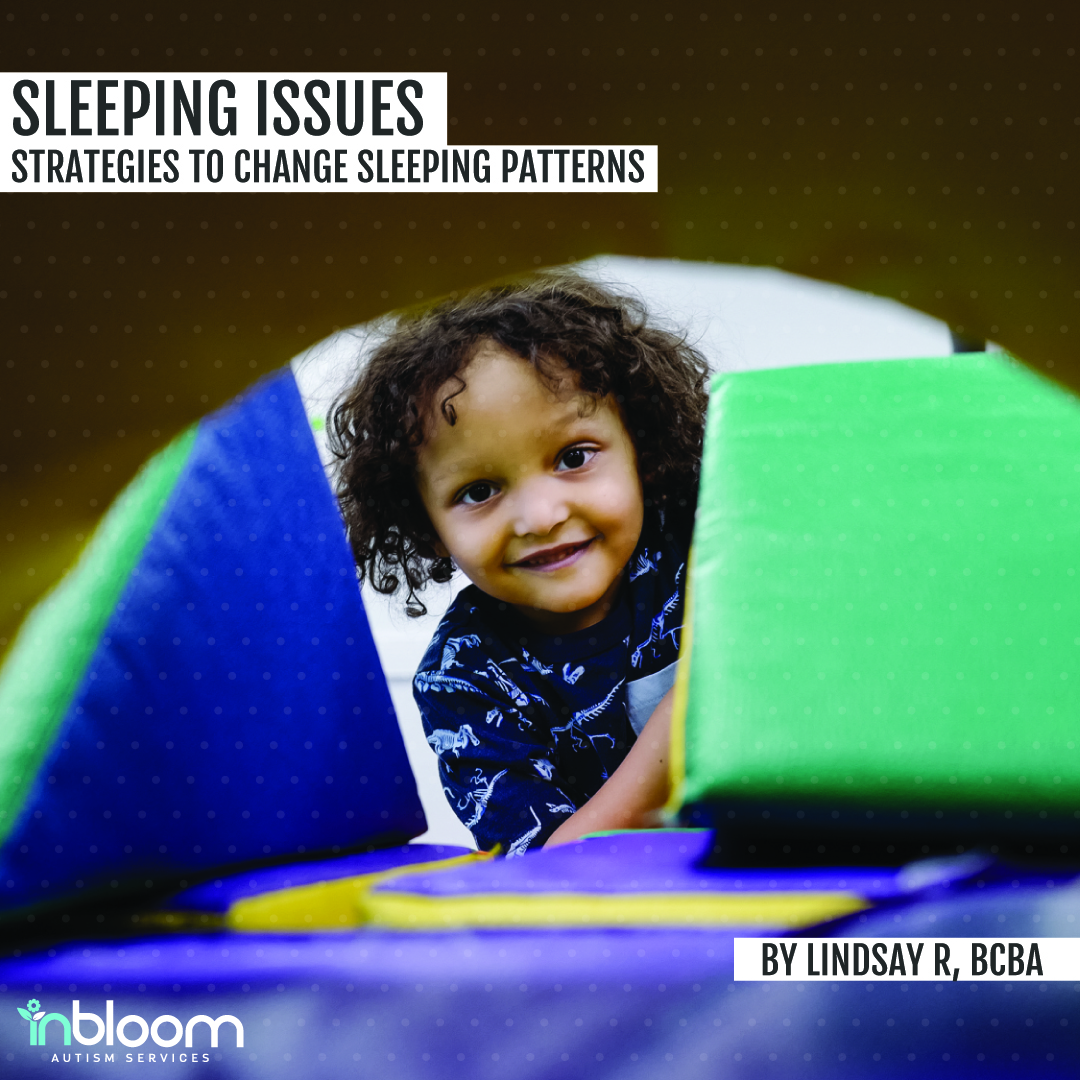Managing Sleep Problems in Children with Autism

Just like with any child, children with autism spectrum disorder (ASD) sometimes have difficulty going to sleep and staying asleep. However, studies show that sleep problems in children with autism are more prevalent than in other children. But don’t worry, we have some insights and tips to help your child get the good night’s sleep they need!
Common Sleep Problems in Autism
Sleep disturbances that may affect children with autism include:
- Irregular sleeping and waking patterns (lying awake until very late or waking very early in the morning).
- Sleeping much less than expected for their age.
- Wakefulness for more than an hour during the night.
- Rising to play or making noise for an hour or more at night.
- Excessive daytime sleepiness.
Sleep problems can have lasting negative effects on children’s cognitive development and daily functioning in several areas, including attention, learning, memory, mood, and behavior. Parents’ sleep quality can also be affected.
Average Sleep Needs for Children by Age
You might be wondering, “How much sleep is my child supposed to get?”
Recommended Sleep Hours for Each Age Group
Each kiddo needs a slightly different amount of sleep. However, in general, these are the average sleep requirements for children:
- Newborn – 1 year old: 14 to 16 hours per day.
- 1 – 3-year-old: 12 to 14 hours per day.
- 3 – 6-year-old: 10 to 12 hours per day.
- 7 – 12-year-old: 10 to 11 hours per day.
If your child with autism is having sleep problems and not getting the appropriate amount of sleep for their age, consider some of the tips below.
Tips to Create a Consistent Autism Bedtime Routine
How can you help your autistic child sleep? Let’s explore some practical ideas.
Establishing Calming Activities Before Bed
Some activities may help relax your child and promote good sleep. Before bed, have your child take a bath (if bath time is a positive experience), work on a puzzle, or listen to a story.
Limiting Screen Time
Not only is screen time distracting, but the blue light produced by devices can interfere with sleep quality. To help your autistic child fall asleep faster and minimize disrupted sleep, try to limit their screen time, especially before bed.
Limiting Stimulants
Caffeine or sugar can make it difficult for anyone to sleep, and this includes a child with ASD. Avoid sugary foods and caffeinated drinks for your child, especially in the hours leading up to bedtime.
Setting Consistent Sleep and Wake Times
Establishing a consistent bedtime can create a predictable routine for your child and promote quality sleep. An appropriate bedtime is when your child is sleepy but not overtired. Set a consistent wake time so your child can get used to waking up at the same time each day.
Using Visual and Verbal Reminders to Prepare for Bedtime
Consider using a timer or verbal reminder (ex: “10 more minutes until bedtime!”). You might use a visual to show your child that it’s almost time for bed. A combination of these could also be helpful.
Some families turn on relaxing music to signal an upcoming bedtime. Feel free to get creative while staying consistent with your methods. Also, choose something you can incorporate anywhere whether at home or on vacation.
Promoting Independent Sleep
All children and adults wake up briefly throughout the night (e.g., rolling over in bed) but can often fall back to sleep using the same routine they use at bedtime. So, if your autistic child needs a parent present to fall asleep at bedtime, they’re more likely to need you to help them fall back asleep in the middle of the night.
If your child does get up and needs your help to fall back asleep, quietly and calmly put them back to bed. You may need to do this multiple times, especially if you’re just beginning to implement a new bedtime routine. It’s worthwhile to stick with it! Teaching your child to fall asleep independently can foster a healthier sleep routine and minimize nighttime disruptions for you and your child.
How to Create a Healthy Sleep Environment
What are some other ways to help your child sleep? Creating a calming environment can promote good sleep and counteract sleep problems.
Adjusting Light, Noise, and Temperature
Your child’s bedroom should be dark, quiet, and at a comfortable temperature. A warm, stuffy room can make it hard to sleep. If the room is too dark, add a dim nightlight. If light shines into the room, try putting blackout curtains over your child’s windows. Also, try to limit audible noise from other siblings, a TV, computer, music, or video games.
Using White Noise or Calming Sounds
Some children with autism may find white noise soothing. Using a sound machine or fan may help your child fall asleep.
Accommodating Sensory Needs
To aid in sleep, many children with autism may find the pressure of a weighted blanket helpful. Sensory-friendly pajamas made from soft, comfortable fabric may also be beneficial.
When To Consult Professionals
Sleep problems are quite common in children with ASD. If your child has difficulty falling asleep, wakes often, or doesn’t seem well-rested, try implementing some of these sleep strategies.
Be sure to discuss sleep disturbances or concerns with your child’s Board Certified Behavior Analyst (BCBA) or pediatrician. They may also have helpful recommendations related to bedtime routines or other approaches to help your child with autism get the sleep they need.
Beginning Your Child’s Journey at InBloom
InBloom Autism Services specializes in early intervention Applied Behavior Analysis (ABA) therapy. Our therapists undergo training to develop a curriculum specifically designed for children aged 5 and under with autism. Our Learning Centers also offer a safe and enjoyable environment for children to interact with their peers.
Contact our helpful team to learn more about how InBloom can help your child learn, grow, and blossom.
Additional Resources
The Positive Effects of ABA Therapy for Children With Autism
Mealtime Made Easier: Practical Tips for Parents
Margaret, S. C., PhD, CRNP, Mason, T. B., MD, PhD, MSCE, Valladares, O., MS, Bucan, M., PhD, Levy, S. E., PhD, Mandell, D. S., ScD, . . . Pinto-Martin, J., PhD, MPH. (2009). Sleep Behaviors and Sleep Quality in Children with Autism Spectrum Disorders. Sleep, 32(12). doi:10.1093/sleep/32.12.1556
Sleep problems: Children with autism spectrum disorder. (2020, May 06). Retrieved July 05, 2020, from https://raisingchildren.net.au/autism/health-daily-care/sleep/sleep-problems-children-with-asd
Weiss, S. K., MD, FRCPC, & Malow, B. A., MD, MS. (n.d.). Strategies to Improve Sleep in Children with Autism Spectrum Disorders: A Parent’s Guide.
References from bottom of original blog post



